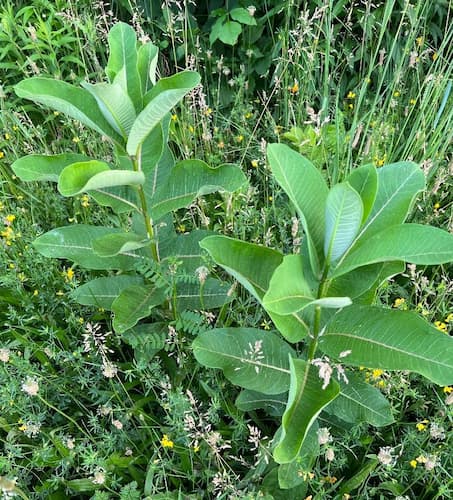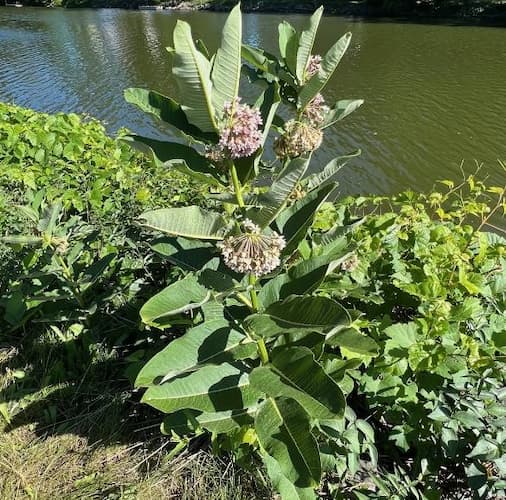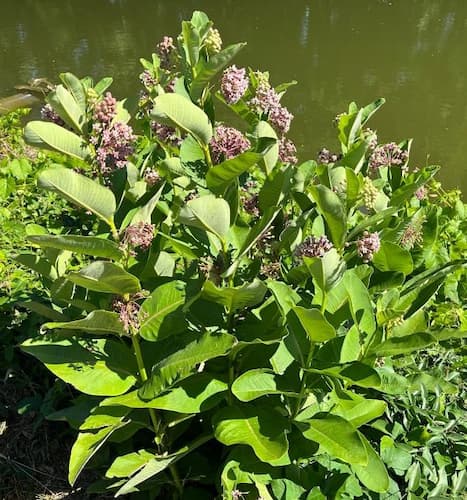How to Grow Common Milkweed Plants

About Growing Common Milkweed Plants
Most gardeners have never given growing common milkweed flowers a thought. After all, it is more of an invasive weed than anything, right!? Now, if you are a butterfly enthusiast, you would be thinking entirely different about this plant. It attracts Monarchs and other butterflies. Perennial milkweed plants are essential for the survival of monarch butterflies. Once you know this, you just might find yourself planting and growing milkweed in naturalized settings and in your new butterfly garden. No butterfly garden is complete without this plant. And, you’ll be glad you planted it!
There are about 140 species. Common milkweed plants and butterfly weed are two of the more popular varieties. The plants are Native to three-quarters of Canada and the U.S. They are not native to the Pacific coast states and provinces. Wherever you find them, you will find butterflies. You might also spot a hummingbird unsuccessfully attempting to extract nectar from the flowers. Milkweed plants are essential to the endangered monarch butterfly. Monarchs only lay their eggs on the plants. Monarch larva and caterpillars eat milkweed plants exclusively. So, without this plant, monarch butterflies would go extinct.
These invasive plants can quickly populate a field or your butterfly garden. Their deeply growing rhizomes help them to spread rapidly. The silky seeds, like dandelion seeds, are scattered far and wide by the wind.
Milkweed Flower Plant Specifications
Flower Colors: These fragrant, globe-like flowers have a variety of colors. they include greenish pink, mauve, pink, pinkish purple, rose, and white.
Flowers Bloom: June through August.
Plant Height: Four to six feet tall.
Ideal Soil pH: 5.5 – 7.5.
Light Requirement: Full sun.
Hardiness Zones: 3 – 9
Are Plants Toxic? Yes. It is toxic to humans, pets, and farm animals.
Deer Resistant? Somewhat.
Number of Species: 140 species worldwide.
Native To: North and South America.
Plant Type: Herbaceous Perennial
Botanical Name: Herbaceous Perennial
Medicinal Uses of Milkweed Flower Plants
Despite being toxic, it does have some medicinal uses.
The sap is used for wart removal. And, it used to treat a variety of lung ailments.
Warning: This is a toxic plant. So, we strongly recommend you do not us milkweed for home medicinal recipes unless you are properly trained on how to do so.
Light Requirements
Milkweed plants grow best in full sunlight. That’s why they are most often found in fields and meadows. Plant them in a location where they receive six to eight hours of full sunlight.
Milkweed Plant Propagation
Take your pick. Milkweed grows from seeds, the spread of their rhizomes, and plant cuttings.
Plant seeds early in the spring after all danger of frost has passed. Or, broadcast spread the seeds in fields or in butterfly garden. The plants are prolific reseeders. The seeds are carried long distances in the breeze. Like many other seeds, they must overwinter in the cold or go through seed stratification for at least 30 days.
In nature, the plants quickly fill in areas by the spread of their rhizomes. You can even dig rhizomes up to plant in another area.
Plant cuttings are another way to propagate them. And, the cuttings grow roots quickly. See: Cutting and rooting plants.
Final Plant Spacing: Space plants 18 – 24 inches apart.

How to Grow Perennial Milkweed Plants
Growing perennial milkweed in your butterfly garden or as a wildflower is easy. The plant is adaptable and not demanding.
They grow best in full sun. They thrive in just about any type of well-draining soil.
Milkweed plants are drought tolerant. Water them only during extended droughts. Allow the top of the soil to dry out before watering again.
The plants do not need fertilizer to grow and thrive.
Also as an invasive plant, they tolerate crowding by other weeds and plants.

Insects and Plant Disease
While the plant is toxic to many insects, there are over 450 known insects that feed on the plant! The most harmful of them are milkweed bugs, aphids, scale insects, spider mites, thrips, and whiteflies.
Very Important: Do not use insecticides on the plant. While insecticides will kill many harmful insects, it will also kill butterflies, including the endangered monarch butterfly.
Disease problems are not too common. Potential plant diseases include fungus problems, root rot in wet soils, and verticillium wilt.
Also see: Plant Problems – Identify the causes and find the cures.
Pruning Perennial Milkweed Flowers
Keep the pruning shears in the shed for this wildflower plant.
However, you can remove and damaged or broken leaves and stems. This improves plant appearance.
Overwintering Milkweed Plants
These hardy perennials need no special care or preparation for winter months.
Related Articles
Also, people who like this article on Milkweed plants will like:
Please support our site. Shop for:
- rmmatthews100@hotmail.com
- 585-721-6528
- Rochester, NY
©1999-2024 GardenersNet.Com, All Rights Reserved

